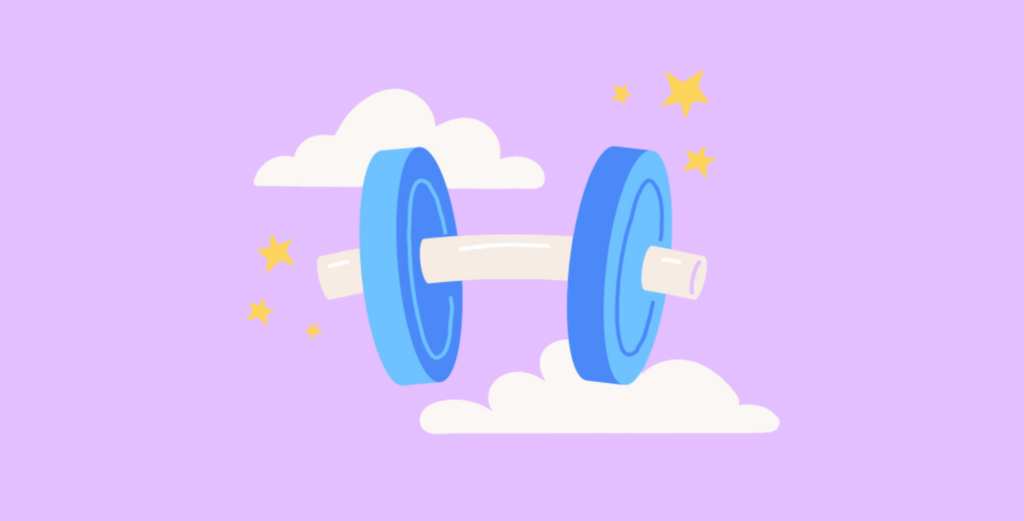
You’re probably familiar with some of the symptoms kids with ADHD experience, like being constantly on the go or having trouble concentrating in class. These symptoms are why many people assume that kids with attentional deficits can’t, or won’t, practice meditation- and it couldn’t be further from the truth.
Meditation is an evidence-based practice that is shown to improve the symptoms of ADHD, and if practiced correctly, can be something that kids with ADHD even look forward to.
AHDH is the acronym for attention-deficit/hyperactivity disorder, a neurodevelopmental disorder that affects more than 17 million children and adults. It is estimated that over 11 million school-aged children are impacted by ADHD. It is primarily defined by a lack of attention, hyperactivity, or a combination of both.
There are three subtypes of ADHD, each with their own category of symptoms:
1. Inattentive. Typically presents itself more quietly than the other two. It is characterized by being easily distracted, appearing lost in thought, having difficulty staying focused or on task, losing things, and making mistakes.
In kids, this might look like a child sitting down trying to finish homework, but not completing their work. Instead, they may be daydreaming, having trouble focusing, or hastily writing down answers.
2. Hyperactive. Typically presents itself with more energy than the inattentive subtype. Common symptoms include excessive talking, constantly moving around, interrupting, and fidgeting.
To use the same example, the hyperactive subset may look like a child trying to finish their homework, but constantly getting out of their chair, running around, or fidgeting with their pencil.
3. Combined. This is a combination of both inattentive and hyperactive symptoms.
Children with ADHD can absolutely learn to meditate, and it’s really good for them. Meditation and mindfulness allow kids with ADHD to give their brains the calming breaks they need and help them pause, reset, and think before they respond. Every time a child with ADHD can slow down their reactions, they feel a sense of control over impulsive thoughts and behaviors.
In time, and with lots of meditation practice, meditation can improve their ability to focus, more easily complete tasks, become better at ignoring outside stimulus and distractions, and maybe most importantly, develop the self-compassion they need to feel good about themselves.
If possible, make the area away from noise and distractions. Invite the child to help you decorate the space with calming items like pillows, blankets, stuffed animals, and maybe hang a meditation curtain or some other fabric to make a private, cozy space.
Some kids with ADHD enjoy having a meditation space in a small closet, a sensory tent, or a fort made with pillows or blankets.
It can be helpful to include:
If your child tends to be quite active, you might want to make this area near, or include a mini trampoline, a swing or a hammock, or even a gymnastics mat if you have one available.
Kids with ADHD usually don’t think it sounds like a lot of fun to be doing a quiet activity. Explain that meditation is going to help them feel better and help them slow down their racing thoughts, and sometimes bodies.
⭐️ Tip: Introduce the concept of meditation to your child with Bunny’s Popcorn Thoughts, a guided story meditation with Bunny, written especially for kids with ADHD.
There will be a time when your child wants to meditate on their own, and even seeks out the time and space to do it. But to begin, make meditation a soothing activity you do together.
First allow your child to spend time enjoying the space, without meditating. In subsequent sessions, invite your child to spend more time in the space. You might want to set a goal, of a few seconds to a minute, of your child just being in the space, maybe listening to soft music, and that may be enough to begin.
Don’t feel you have to up the time with every session. Let your child take the lead. If five seconds is all they can manage for a week or longer, that is completely okay. Even small bursts of micro meditation have real benefits that kids can experience.
⭐️ Tip: Curious about micro meditation for your child? Try Flower Breaths, a mini meditation that teaches breathwork in two minutes.
Children with ADHD can feel out of control when they don’t know what to expect. A visual calendar/schedule can reduce their anxiety about what is to come, and also lets them see that meditation is something important, so important, in fact, that we make time in our day to do it.
Some kids with ADHD enjoy seeing their progress toward a goal on a chart or receiving rewards for completing tasks. There are so many ways to track and reward behaviors, and you know your child best. Some kids enjoy earning stickers on a chart, a “smelly” stamp on their hand, or tokens in a jar that they can redeem for a special reward.
There is a huge misconception that meditation is only meditation when it is done by sitting in silence. That is absolutely false. Your child can move while they meditate, in a way that is soothing to them. This doesn’t mean running wild and not respecting the meditation space, but rather allowing calming movement that is pleasing to them. This might mean they stand, they sway, or they jump on a trampoline while listening to a meditation.
Allow your child to use soft modeling dough, a fidget toy, or anything that gives them comfort and allow them to more fully participate in meditation.
⭐️ Tip: If your child is feeling distracted, try a gentle moving meditation like Sunflower Stretch to help them feel more grounded and focused.
Some children, especially those with ADHD, enjoy listening to drumming meditation music and using a mallet, or their hands to meditate while drumming along with the music. Some children enjoy listening to drumming tracks while rhythmically jumping along to the beat on a mini-trampoline.
⭐️ Tip: Is your child interested in drumming? Try Rhythm of the Drum, a drumming meditation where little ones can listen, clap, tap, rock, stomp, wiggle and move to the steady beat of a drum.
Once your child has had some success with spending a little bit of time in their meditation space, you can introduce guided story meditations into their practice. This type of meditation combines classic storytelling that kids naturally gravitate towards, with meditation practices woven throughout the narrative. Guided story meditations teach kids meditation alongside characters who think, feel, and act like your child, so littles ones learn how meditation can be applied in their daily lives.
⭐️ Tip: Bunny’s Magic Coloring Book explores meditation through coloring and allows children with ADHD to meditate while practicing a calming activity.
Kids with ADHD are often very frustrated, and feel mad at themselves. They want to pay attention and tame their racing thoughts, but don’t know how.
You can help them develop affirmations to use while in their meditation space and throughout the day, or before bed, to help them reprogram their limiting beliefs and help to develop a positive mindset for future success.
⭐️ Tip: Teach your child how to use affirmations to encourage positive self-love with Raccoon and the Wishing Well.
Kids with ADHD spend so much time beating themselves up for what they feel are their flaws. Teach them that with their extra energy, they can do great things. To this end, teaching them self-compassion, through meditation, is a very beneficial practice.
1. Relax into their space. Kids can calm themselves in any way that feels right: taking deep breaths, feeling the texture of a soft blanket, holding soft modeling dough, whatever feels right for your child.
2. Permit the ADHD feelings and movements to be there. When you permit a feeling to be there, without fighting it, you may notice that the feelings/movements come and go. Permitting every feeling, even the discomfort, without judgment, is the key to this practice.
3. Comfort themselves and the part of their body that is moving, or in pain, by saying, kind words, aloud, or to themselves.
The Relax, Permit, and Comfort method promotes self-compassion through cultivating feelings of kindness and acceptance.
Similar to self-compassion meditation, a loving-kindness meditation for kids with ADHD teaches them how to express love and kindness to themselves, those they may have experienced difficulties with, like another child, those they love, and all beings on the planet. When the child is able to spend a few minutes meditating, encourage them to repeat a simple loving-kindness script. Here is a sample.
I send peaceful wishes to myself.
I send peaceful wishes to my (mom, dad, teacher, sibling, etc.)
I send peaceful wishes to (person who they have had difficulty with.)
I send peaceful wishes to all living beings, big and small.
I send peaceful wishes to all plants and trees and evergreens.
I send peaceful wishes to the moon and stars, the sun and sky.
I send peaceful wishes to lakes and rivers and oceans and streams.
⭐️ Tip: Your child can learn how to practice with Weasel’s Loving-Kindness Meditation, a guided story meditation with Weasel about self-love.
Like any other practice, it takes time for kids to learn meditation. Making meditation a part of their daily routine is a great way for your child to become comfortable with and benefit from meditation. Meditation will not just benefit them in the short term, but they learn skills that will benefit them for a lifetime.

